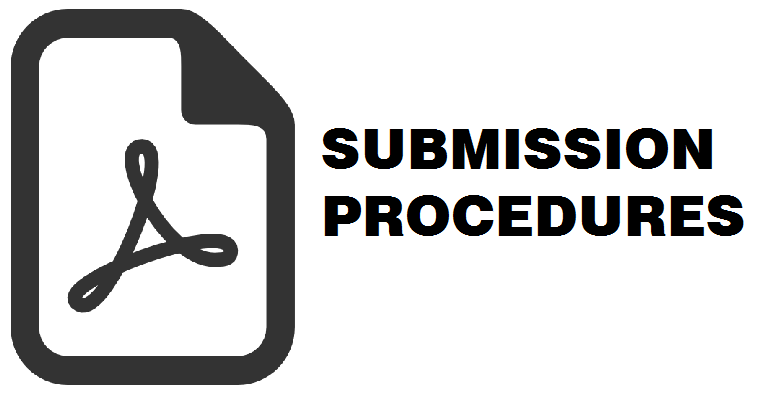Analisis Tren Frekuensi Banjir Kali Mriwong
Anggara Apriyan Pradana(1*), Ellyta Anggraini(2), Mahendra Ken Pambayun(3), Fuad Muhammad(4), Agus Hari Wahyudi(5)
(1) Magister Ilmu Lingkungan, Sekolah Pascasarjana, Universitas Diponegoro, Semarang, Indonesia
(2) Dinas Pekerjaan Umum, Perumahan dan Kawasan Permukiman, Jawa Timur, Indonesia
(3) Kantor Pertanahan Kabupaten Tanjung Jabung Timur, Kementerian Agraria dan Tata Ruang/Badan Pertanahan Nasional
(4) Departemen Biologi, Fakultas Sains dan Matematika, Universitas Diponegoro, Jalan Prof. Soedarto, SH, Semarang, Indonesia 50275
(5) Departemen Teknik Sipil, Fakultas Teknik, Universitas Sebelas Maret, Surakarta, Indonesia
(*) Corresponding Author
Abstract
Abstract. Sustainable development adheres to the principle of intergenerational justice. Floods are the most destructive global disasters on a geographical scale. Land use changes and increasing population growth result in the distrution of locations for storing water. Land use changes contribute to the increasing flood disaster. The human population living in flood-prone areas feels the impact of increasingly severe material and health losses. Pulung District is an area with high rainfall in Ponorogo Regency, East Java, Indonesia. Mriwong utilized for irrigation. The development of agriculture in the catchment area of Mriwong River affects the discharge continuity. Throughout 2020, 12 flood disasters and 1 drought were recorded. The intent of this research is to analyze the flood threshold and trend analysis of Mriwong River Flood Frequency. The methods used are percentile analysis and trend analysis. The data utilized are Mriwong River discharges 2014 to 2020. The research results show that the appropriate flood threshold for Mriwong River is Q95. Then, an increasing trend of flood frequency was detected in March, and a decreasing trend occurred in April. The increase and decrease of flood frequency trends is an early indication of rainy season change. Therefore, flood management in Ponorogo Regency needs to consider comprehensive research on rainfall. The flood early warning system management in Ponorogo Regency required analyzing the flood threshold at other discharge monitoring stations (Cokromenggalan, Wilangan, Gendol, Ngebel, Kedung Celeng, Watu Putih, Galok, and Sungkur). Suggestions for further research: It is necessary to try other types of equations in analyzing R2 to find the best equation model that represents the trend of flood frequency in Ponorogo Regency.
Submitted: 2024-11-28 Revisions: 2025-03-12 Accepted: 2025-06-20 Published: 2025-08-08
Keywords
Full Text:
PDFReferences
Anwar, Y., Setyasih, I., Ningrum, M. V. R., & Jedo, A. (2022). Dampak Bencana Banjir Terhadap Ekonomi Masyarakat di Kecamatan Samarinda Utara, Kota Samarinda. Jurnal Pendidikan Geografi, 9(1), 40–48. https://doi.org/10.20527/jpg.v9i1.12457
Arafat, B. A. P., & Taniady, V. (2021). Pemenuhan Hak Masyarakat Miskin Terhadap Perumahan dan Permukiman yang Layak di Perkotaan Indonesia: Studi Perbandingan Singapura dan Australia. Jurist-Diction, 4(2). https://doi.org/10.20473/jd.v4i2.25753
Avanzi, F., Ercolani, G., Gabellani, S., Cremonese, E., Pogliotti, P., Filippa, G., Morra DI Cella, U., Ratto, S., Stevenin, H., Cauduro, M., & Juglair, S. (2021). Learning about precipitation lapse rates from snow course data improves water balance modeling. Hydrology and Earth System Sciences, 25(4). https://doi.org/10.5194/hess-25-2109-2021
Ayat, M., & Jonizar, J. (2020). Konsep Pembangunan Permukiman Berwawasan Lingkungan. Bearing : Jurnal Penelitian Dan Kajian Teknik Sipil, 6(2). https://doi.org/10.32502/jbearing.2830201962
Badan Pusat Statistik. (2021). Kabupaten Ponorogo dalam Angka Tahun 2021 (BPS Kabupaten Ponorogo (ed.)). CV. Azka Putra Pratama. https://ponorogokab.bps.go.id/
Beck, H. E., Vergopolan, N., Pan, M., Levizzani, V., Van Dijk, A. I. J. M., Weedon, G. P., Brocca, L., Pappenberger, F., Huffman, G. J., & Wood, E. F. (2017). Global-scale evaluation of 22 precipitation datasets using gauge observations and hydrological modeling. Hydrology and Earth System Sciences, 21(12). https://doi.org/10.5194/hess-21-6201-2017
Environment and Climate Change Canada. (2022). Water Quantity in Canadian Rivers. In Water Quantity in Canadian Rivers (p. 23). www.canada.ca/en/environment-climate-change/services/environmental-indicators/water-quantity- canadian-rivers.html
Faruq, A. (2015). Analisis Kejadian Banjir di Wilayah UPT PSDA Malang, Madiun, dan Bojonegoro Menggunakan Metode Ambang Batas (Threshold Level Method). In Digital Repository Universitas Jember.
Feng, B., Zhang, Y., & Bourke, R. E. (2021). Urbanization impacts on flood risks based on urban growth data and coupled flood models. Natural Hazards, 106, 613–627. https://api.semanticscholar.org/CorpusID:231747610
Ghozali, I. (2018). Aplikasi Analisis Multivariate dengan Program IBM SPSS 25 (edisi 9). Badan Penerbit Universitas Diponegoro.
Gocic, M., & Trajkovic, S. (2014). Analyse des tendances des données d’évapotranspiration de référence en climat humide. Hydrological Sciences Journal, 59(1), 165–180. https://doi.org/10.1080/02626667.2013.798659
Gütschow, J., Jeffery, M. L., Schaeffer, M., & Hare, B. (2018). Extending Near-Term Emissions Scenarios to Assess Warming Implications of Paris Agreement NDCs. Earth’s Future, 6(9), 1242–1259. https://doi.org/10.1002/2017EF000781
Hartono, Y. D., & Nurbaity, D. P. (2021). Pengembangan Infrastruktur Berbasis Resilient City di Kota Kendari Sulawesi Tenggara. Pawon: Jurnal Arsitektur, 5(2), 293–310. https://doi.org/10.36040/pawon.v5i2.3664
Herdiana, D. (2022). Kemiskinan, Kesenjangan Sosial dan Pembangunan Desa. Jurnal Inovasi Masyarakat, 2(3). https://doi.org/10.33197/jim.vol2.iss3.2022.985
Hermawan, E. (2010). Pengelompokkan Pola Curah Hujan Yang Terjadi Di Beberapa Kawasan P. Sumatera Berbasis Hasil Analisis Teknik Spektral. Jurnal Meteorologi Dan Geofisika, 11(2), 75–85. https://doi.org/10.31172/jmg.v11i2.67
Hisdal, H., Clausen, B., Gustard, A., Peters, E., & Tallaksen, L. M. (2004). Event Definitions and Indices. Hydrological Drought –Processes and Estimation Methods for Streamflow and Groundwater, 34.
Kundzewicz, Z. W., & Robson, A. J. (2004). Change detection in hydrological records - A review of the methodology. Hydrological Sciences Journal, 49(1), 7–19. https://doi.org/10.1623/hysj.49.1.7.53993
Lai, C. M. T., & Cole, A. (2023). Measuring progress of smart cities: Indexing the smart city indices. Urban Governance, 3(1). https://doi.org/10.1016/j.ugj.2022.11.004
Miranti, R., Widhiyoga, G., & Haqqi, H. (2018). Analisis pembangunan berkelanjutan terhadap kebijakan perubahan iklim Indonesia sebagai upaya mengakomodasi Paris Agreement. Transformasi, I(34), 56–68.
Mitchell, S. L., Edwards, D. P., Bernard, H., Coomes, D., Jucker, T., Davies, Z. G., & Struebig, M. J. (2018). Riparian reserves help protect forest bird communities in oil palm dominated landscapes. Journal of Applied Ecology, 55(6). https://doi.org/10.1111/1365-2664.13233
Nasyidah, M., Fajar, N. A., & Najmah. (2022). Tinjauan Faktor Air dan Sanitasi dengan Kejadian Stunting pada Balita A Review of Water and Sanitation Factors with Child. Jurnal Kesehatan Komunitas, 8(3), 597–606. https://doi.org/10.25311/keskom.Vol8.Iss3.1338
Onoz, B., & Bayazit, M. (2003). The Power of Statistical Tests for Trend Detection. Turk. J. Environ. Eng. Sci., 27.
Pemerintah Kabupaten Ponorogo. (2021). Rencana Pembangunan Daerah Kabupaten Ponorogo Tahun 2021-2026. https://www.ptonline.com/articles/how-to-get-better-mfi-results
Qolbi, P. T., Indarto, & Wahyuningsih, S. (2015). Studi Pendahuluan Penerapan Metode Ambang Batas untuk Analisis Potensi Banjir di Wilayah Jawa Timur. Berkala Ilmiah Teknologi Pertanian, 1.
Raiser, K., Kornek, U., Flachsland, C., & Lamb, W. F. (2020). Is the Paris Agreement effective? A systematic map of the evidence. In Environmental Research Letters (Vol. 15, Issue 8). IOP Publishing Ltd. https://doi.org/10.1088/1748-9326/ab865c
Ramos, M. H., Bartholmes, J., & Thielen-del Pozo, J. (2007). Development of decision support products based on ensemble forecasts in the European flood alert system. Atmospheric Science Letters, 8(4). https://doi.org/10.1002/asl.161
Rusydan, Winarni, & Hermawan. (2020). Seri Pembaharuan Pendidikan Membangun Kelas Aktif dan Inspiratif. Deepublish, 6(1).
Setiawan, D. E. (2021). Analisis Curah Hujan di Indonesia untuk Memetakan Daerah Potensi Banjir dan Tanah Longsor dengan Metode Cluster Fuzzy C-Means dan Singular Value Decompotition (SVD). Engineering, MAthematics and Computer Science (EMACS) Journal. https://api.semanticscholar.org/CorpusID:242235863
Singh, K. R. (2024). Comparative Analysis of Flood Estimation using Log-Pearson Type III and Gumbel Max Models in the Cauvery River, India. International Journal of Innovative Science and Research Technology (IJISRT). https://api.semanticscholar.org/CorpusID:269677021
Sulistio, H., Pratiwi, N. A. H., Melisa, E., Maisyarah, S., Mariana, B., Aji, A. S., & Triandini, F. (2019). Meneropong Pembangunan Hijau di Indonesia: Kesenjangan dalam Perencanaan Nasional dan Daerah (Studi Kasus: Jambi dan Provinsi Kalimantan Timur). In Kemitraan bagi Pembaruan Tata Pemerintahan Pemerintahan Pemerintahan.
Tabari, H., & Hosseinzadeh Talaee, P. (2011a). Analysis of trends in temperature data in arid and semi-arid regions of Iran. Global and Planetary Change, 79(1–2), 1–10. https://doi.org/10.1016/j.gloplacha.2011.07.008
Tabari, H., & Hosseinzadeh Talaee, P. (2011b). Recent trends of mean maximum and minimum air temperatures in the western half of Iran. Meteorology and Atmospheric Physics, 111(3), 121–131. https://doi.org/10.1007/s00703-011-0125-0
Taman, P., Dalam, K., Kota, M., Di, B., Tulungagung, P., Agustin, Z., Azzahro, I. A., Fachrudin, M. A., Badriyah, L., & Hijau, P. R. T. (2023). Peranan Taman Kota Dalam Mewujudkan Kota Berkelanjutan Di Perkotaan Tulungagung. Dewantara : Jurnal Pendidikan Sosial Humaniora. https://api.semanticscholar.org/CorpusID:272772376
Tate, E., Rahman, M. A., Emrich, C. T., & Sampson, C. C. (2021). Flood exposure and social vulnerability in the United States. Natural Hazards, 106, 435–457. https://api.semanticscholar.org/CorpusID:231670331
Tenda, E. P., Lengkong, A. V., & Pinontoan, K. F. (2021). Sistem Peringatan Dini Banjir Berbasis IoT dan Twitter. CogITo Smart Journal, 7(1). https://doi.org/10.31154/cogito.v7i1.284.26-39
Utami, G. F., Suhaedi, D., & Kurniati, E. (2021). Perbandingan Metode Regresi Linier dan Non-Linier Kuadratik Pada Peramalan Penjualan Air Minum Comparison of Quadratic Linear and Non-Linear Regression Methods In Forecasting Drinking Water Sales. Jurnal Matematika, 20(2), 33–41.
Warren, J., & Gilbert, R. O. (1988). Statistical Methods for Environmental Pollution Monitoring. In Technometrics (Vol. 30, Issue 3). https://doi.org/10.2307/1270090
Wibisono, Y. (2009). Metode Statistik (Ed.2). Gadjah Mada University Pers. https://ugmpress.ugm.ac.id/id/product/arsitektur/metode-statistik
Wijayanti, D. E., & Priyanto, M. W. (2022). Pengaruh Urbanisasi terhadap Lahan Garapan di Indonesia. AGRISCIENCE. https://api.semanticscholar.org/CorpusID:252170177
World Commission on Environment and Development. (1987). Report of the World Commission on Environment and Development: Our Common Future (The Brundtland Report). Medicine, Conflict and Survival, 4. https://doi.org/10.1080/07488008808408783
Article Metrics
Refbacks
- There are currently no refbacks.
Copyright (c) 2025 Author and Majalah Geografi Indonesia

This work is licensed under a Creative Commons Attribution-ShareAlike 4.0 International License.
Volume 35 No 2 the Year 2021 for Volume 39 No 1 the Year 2025
ISSN 0215-1790 (print) ISSN 2540-945X (online)








